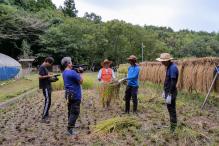As the era of coal phaseout approaches, thousands of industrial coal mines across the world now face imminent closure. To navigate through this transition, the Weisswasser branch of UNU-FLORES aims to position the former mining region of Lusatia as a model for the numerous regions that now stand to experience similar challenges. The research branch’s diverse international team is dedicated to addressing a common global question: does the post-mining legacy function as an asset, or a liability within the Resource Nexus framework? Tailoring land-use decisions to the specific material and resource demands of each former mining area is crucial; although there currently exists no definitive instruction as to how a biome can be recreated, the issue of meeting community demands while preserving the resource base remains paramount. In essence, the Resource Nexus approach does not prioritise the transformations of minescapes into “green” or “blue” areas for its own sake. Rather, the management plan is to be deemed successful if a barren area can be repurposed into an energy facility, transport hub, warehouse, etc, and ensures the conservation of resources by favoring brownfield development over greenfield expansion.
Project
Resource Nexus for Post-Mining Inclusive Transition (REPOINT)
The project focuses on optimizing land use, repurposing post-mining areas to meet community needs while conserving resources.
Related content
News
Inclusive Biodiversity Governance Showcased at CBD Meetings in Panama
UNU-IAS experts shared insights on resilience, governance and community-led monitoring at key meetings under the Convention on Biological Diversity.



